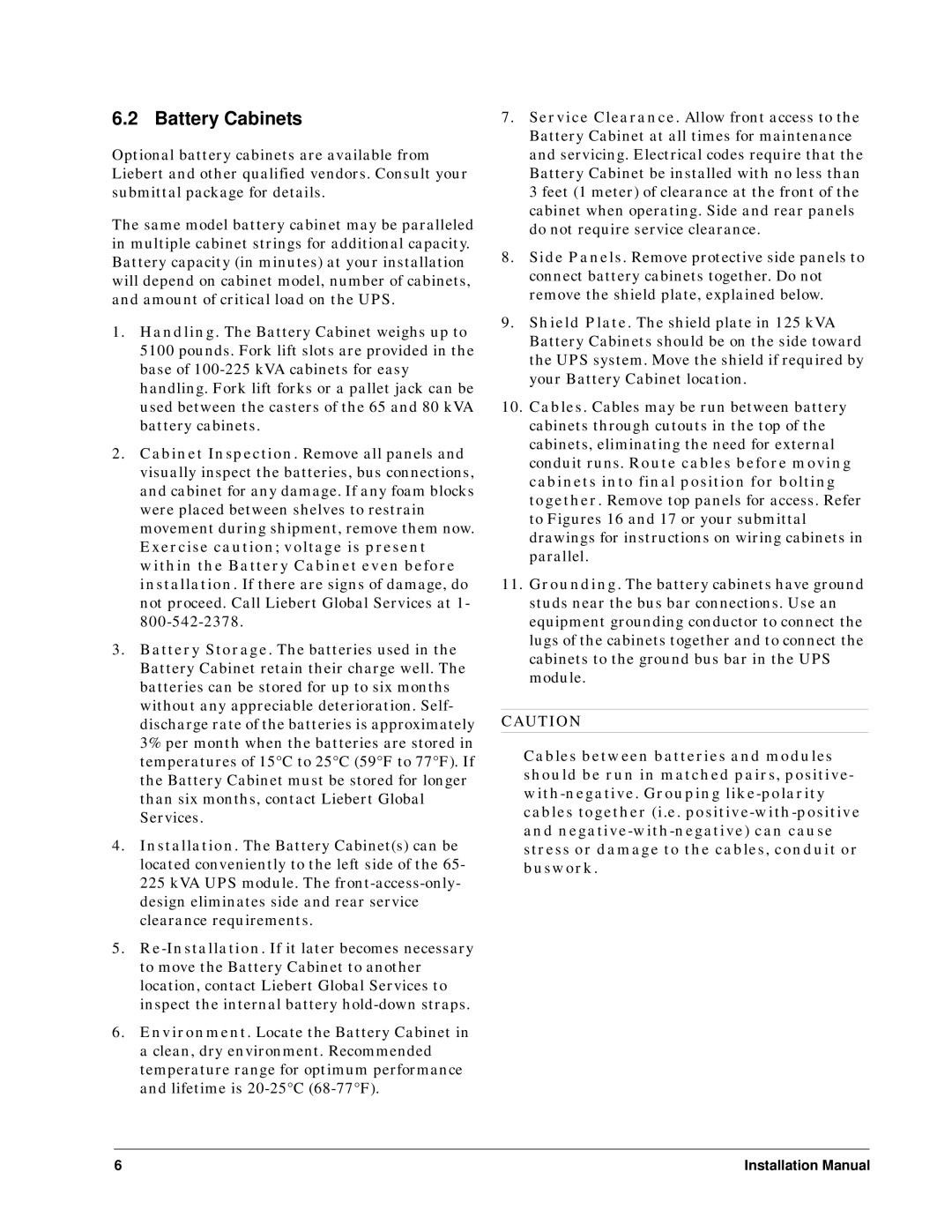
6.2 Battery Cabinets
Optional battery cabinets are available from Liebert and other qualified vendors. Consult your submittal package for details.
The same model battery cabinet may be paralleled in multiple cabinet strings for additional capacity. Battery capacity (in minutes) at your installation will depend on cabinet model, number of cabinets, and amount of critical load on the UPS.
1.Handling. The Battery Cabinet weighs up to 5100 pounds. Fork lift slots are provided in the base of
2.Cabinet Inspection. Remove all panels and visually inspect the batteries, bus connections, and cabinet for any damage. If any foam blocks were placed between shelves to restrain movement during shipment, remove them now.
Exercise caution; voltage is present within the Battery Cabinet even before installation. If there are signs of damage, do not proceed. Call Liebert Global Services at 1-
3.Battery Storage. The batteries used in the Battery Cabinet retain their charge well. The batteries can be stored for up to six months without any appreciable deterioration. Self- discharge rate of the batteries is approximately 3% per month when the batteries are stored in temperatures of 15°C to 25°C (59°F to 77°F). If the Battery Cabinet must be stored for longer than six months, contact Liebert Global Services.
4.Installation. The Battery Cabinet(s) can be located conveniently to the left side of the 65- 225 kVA UPS module. The
5.
6.Environment. Locate the Battery Cabinet in a clean, dry environment. Recommended temperature range for optimum performance and lifetime is
7.Service Clearance. Allow front access to the Battery Cabinet at all times for maintenance and servicing. Electrical codes require that the Battery Cabinet be installed with no less than 3 feet (1 meter) of clearance at the front of the cabinet when operating. Side and rear panels do not require service clearance.
8.Side Panels. Remove protective side panels to connect battery cabinets together. Do not remove the shield plate, explained below.
9.Shield Plate. The shield plate in 125 kVA Battery Cabinets should be on the side toward the UPS system. Move the shield if required by your Battery Cabinet location.
10.Cables. Cables may be run between battery cabinets through cutouts in the top of the cabinets, eliminating the need for external conduit runs. Route cables before moving cabinets into final position for bolting together. Remove top panels for access. Refer to Figures 16 and 17 or your submittal drawings for instructions on wiring cabinets in parallel.
11.Grounding. The battery cabinets have ground studs near the bus bar connections. Use an equipment grounding conductor to connect the lugs of the cabinets together and to connect the cabinets to the ground bus bar in the UPS module.
CAUTION
Cables between batteries and modules should be run in matched pairs, positive-
6 | Installation Manual |
